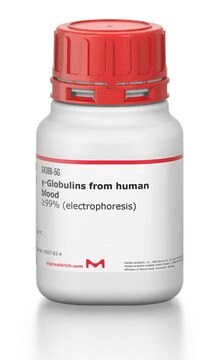M7653
Medium 199
With Hanks′ salts and sodium bicarbonate, without L-glutamine, liquid, sterile-filtered, suitable for cell culture
Sign Into View Organizational & Contract Pricing
All Photos(1)
About This Item
UNSPSC Code:
12352207
NACRES:
NA.75
Recommended Products
Quality Level
sterility
sterile-filtered
form
liquid
technique(s)
cell culture | mammalian: suitable
impurities
endotoxin, tested
components
L-glutamine: no
NaHCO3: yes
Hanks’ salts (2% CO2): yes
sodium pyruvate: no
phenol red: yes
HEPES: no
shipped in
ambient
storage temp.
2-8°C
Looking for similar products? Visit Product Comparison Guide
Related Categories
General description
Medium 199 is a combination of vitamins, amino acids, and other factors that were originally developed as a completely defined media formulation for the culture of primary explants. This medium, when properly supplemented has broad applicability, particularly for non-transformed cells. Medium 199 is widely used for vaccine production, in vitro cultivation of primary pancreatic explants, and lens tissues.
Modification of the original Medium 199.Earle′s salts are replaced with Hanks′ salts. Hanks′ salts use a lower concentration of bicarbonate and different concentrations and salt forms of the essential inorganic ions.
Reconstitution
Supplement with 0.1 g/L L-glutamine.
also commonly purchased with this product
Product No.
Description
Pricing
Storage Class Code
12 - Non Combustible Liquids
WGK
WGK 1
Flash Point(F)
Not applicable
Flash Point(C)
Not applicable
Certificates of Analysis (COA)
Search for Certificates of Analysis (COA) by entering the products Lot/Batch Number. Lot and Batch Numbers can be found on a product’s label following the words ‘Lot’ or ‘Batch’.
Already Own This Product?
Find documentation for the products that you have recently purchased in the Document Library.
Customers Also Viewed
Etienne de Coulon et al.
iScience, 24(2), 102041-102041 (2021-02-04)
A comprehensive understanding of mechano-electrical coupling requires continuous intracellular electrical recordings being performed on cells undergoing simultaneously in vivo like strain events. Here, we introduce a linear strain single-cell electrophysiology (LSSE) system that meets these requirements by delivering highly reproducible unidirectional
IGSF1 Does Not Regulate Spermatogenesis or Modify FSH Synthesis in Response to Inhibins or Activins.
Emilie Brûlé et al.
Journal of the Endocrine Society, 5(4), bvab023-bvab023 (2021-04-03)
Loss-of-function mutations in the X-linked immunoglobulin superfamily, member 1 (IGSF1) gene result in central hypothyroidism, often associated with macroorchidism. Testicular enlargement in these patients might be caused by increases in follicle-stimulating hormone (FSH) levels, as IGSF1 has been proposed to
Yining Li et al.
The Journal of biological chemistry, 292(6), 2301-2314 (2016-12-21)
Pituitary follicle-stimulating hormone (FSH) is an essential regulator of fertility in females and of quantitatively normal spermatogenesis in males. Pituitary-derived activins are thought to act as major stimulators of FSH synthesis by gonadotrope cells.
Benoît X E Desbiolles et al.
Microsystems & nanoengineering, 6, 67-67 (2021-09-28)
Volcano-shaped microelectrodes (nanovolcanoes) functionalized with nanopatterned self-assembled monolayers have recently been demonstrated to report cardiomyocyte action potentials after gaining spontaneous intracellular access. These nanovolcanoes exhibit recording characteristics similar to those of state-of-the-art micro-nanoelectrode arrays that use electroporation as an insertion
Matthias Imboden et al.
Nature communications, 10(1), 834-834 (2019-02-21)
Systematic investigations of the effects of mechano-electric coupling (MEC) on cellular cardiac electrophysiology lack experimental systems suitable to subject tissues to in-vivo like strain patterns while simultaneously reporting changes in electrical activation. Here, we describe a self-contained motor-less device (mechano-active
Our team of scientists has experience in all areas of research including Life Science, Material Science, Chemical Synthesis, Chromatography, Analytical and many others.
Contact Technical Service





